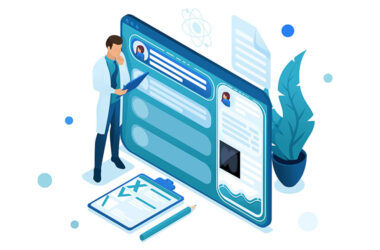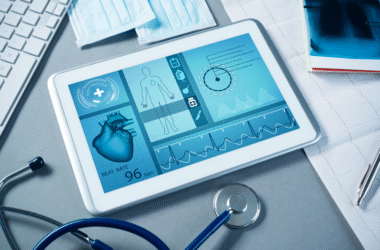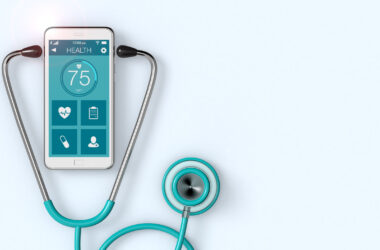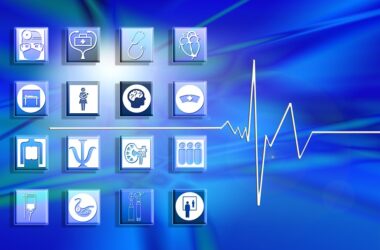In hospitals, clinics, and labs, doctors and nurses deal with large amounts of patient information every day. But this data often sits in different systems that cannot talk to each other. One hospital may use one kind of software, while another clinic uses something else. This creates a huge problem when a patient moves from one place to another. Interoperability means that all these different systems can share data in a smooth and safe way. Without it, doctors may miss important health details, which can lead to wrong or late treatments.
How Interoperability Works in Healthcare
Interoperability is about connecting many systems in a way that lets them pass health data back and forth easily. It includes patient records, lab results, prescriptions, allergies, and even health apps people use on their phones. For example, if a patient sees a heart doctor and later visits a skin doctor, both doctors should be able to see the full medical history. That can only happen if the data is shared across systems without any problem.
There are different levels of this sharing. At the basic level, systems can send data. At the highest level, they can understand it in the same way and use it to help care for patients. The best systems can exchange, read, and use the same health information even if they were made by different companies.
Why Interoperability Is So Important

· Better and Safer Patient Care
One of the biggest reasons we need systems to connect is to keep people safe. When doctors and nurses can see a full and up-to-date record, they make better choices. They avoid giving the wrong medicine or repeating tests that the patient already had. The Office of the National Coordinator for Health IT says that more than 80% of hospitals can now send and receive records, but not all can use the data well. That’s a problem that still needs fixing.
· Saves Time and Costs
When systems share data, hospitals and clinics do not need to spend hours sending paper files or calling other offices. This saves time for both staff and patients. It also cuts costs. A report from the Center for Information Technology Leadership showed that full use of health data sharing could save up to $77 billion a year in the US by cutting down on repeat tests, medical errors, and paper work.
· Helps in Public Health and Emergencies
Interoperable systems are also important during health crises. During COVID-19, doctors, hospitals, and public health agencies needed fast access to data. Places with strong data sharing did better at tracking the virus and giving care. The CDC found that poor data sharing slowed down responses in many areas. So, when systems talk to each other, whole communities stay safer.
· Helps Patients Be in Control
When people move, travel, or switch doctors, their health information should move with them. Interoperable systems make this possible. Patients can see their records, know their test results, and track their care. In fact, a 2022 Pew study found that 61% of Americans want easy digital access to their health data. But many still say the tools they use are too hard to work with. Fixing this will need better design and better sharing rules.
Challenges That Still Exist
Even though many healthcare systems now use electronic records, not all of them work well together. Different rules, software systems, and privacy rules get in the way. Also, some health groups are slow to share because they worry about losing patients or breaking rules. A 2021 Health Affairs study showed that nearly 1 in 4 doctors still cannot easily send or receive outside patient data.
Security is another big issue. If systems are not built right, sharing data can open the door to cyber attacks. That’s why every data sharing system must follow strong safety rules to keep patient records safe.
What’s Being Done About It
Groups like HL7 and its FHIR standard are trying to solve these problems. FHIR is a set of rules that helps different systems speak the same “language.” More hospitals and apps are starting to use it. The 21st Century Cures Act also pushes health systems to open up their data to patients and other providers, unless there’s a good reason not to.
Some companies are working on tools that pull data from many sources and show it in one place. These tools can help doctors get the full picture of a patient’s health without logging into many different systems.
Why It Matters for the Future
As more people use fitness trackers, health apps, and telehealth tools, the need for shared data keeps growing. These tools can give useful health signs, like heart rate or sleep patterns. But their value is limited if doctors can’t see the data or match it with other health records. Interoperability brings all of this together.
Also, better data sharing supports new ways of giving care. It helps doctors work in teams and focus on long-term health, not just one-time visits. For example, in value-based care, doctors are paid based on how well patients do, not just how many services are given. This kind of care depends on complete and up-to-date data, which only comes from strong data sharing systems.
Final Thoughts
Interoperability in healthcare is not just a tech feature. It is a must for giving good care, saving money, and helping patients stay informed. The tools and rules are already being built, but more work is needed. Systems should not just collect data, they should share it in a way that helps real people.









